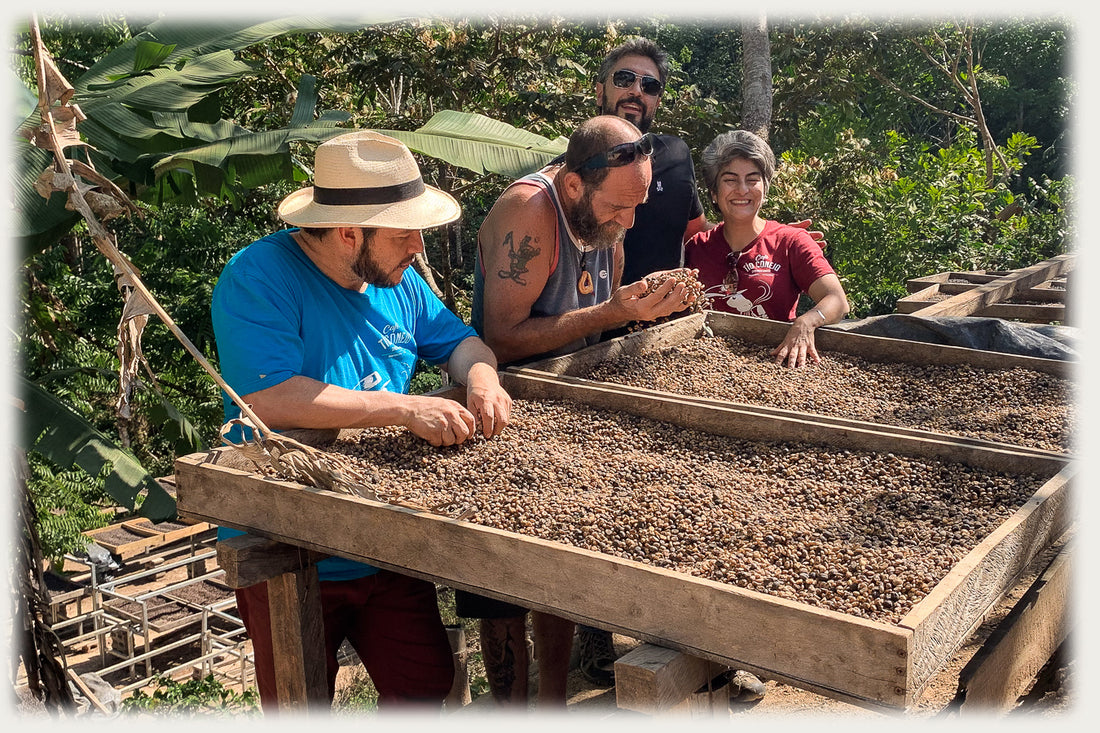
The Science of Coffee: Coffee the Botanical III—Varietals
Share
So, you thought things were getting complicated when we told you there are over 100 species of coffee? Well we were just getting started! Each species is even more numerous in varietals.
To keep the discussion relevant to what’s in your cup, we are going to focus on the varietals afforded by coffea arabica.
The easiest way to think of coffee varietals is to think of them in the same way you think of wine varietals. A cabernet sauvignon, a pinot noir, and a white zinfandel are all named for the grape varietal they are made from (albeit, European wines are named for the region in which their grapes are grown—but let’s forget that for the moment.) Each of these have their own physical characteristics, preferred growing conditions, and flavor profile.
Keep in mind there are thousands of coffee varietals, so we will just be scratching the surface here.
Ethiopian Heirloom
Coffee originating in Ethiopia, and that continues to grow wild there, fosters infinite cross-pollination that occurs under natural conditions—yielding innumerable variations. There’s anywhere between six and ten-thousand Ethiopian Heirloom varietals making genetic testing of these varieties an insurmountable task. As such “Ethipoian Heirloom” has become a catch-all phrase to describe these coffees.
The next two varietals are easily the most culturally and genetically important of Arabica coffees; sharing a similar history and genealogy. Most coffee produced in Latin America is still based on cultivars developed from Typica and Bourbon varieties.
Typica
Evidence suggests this varietal originates in Southwestern Ethiopia. Typica plants are of tall stature, with somewhat large beans. They are highly susceptible to rust, berry disease, and nematode infestations. Typica varietals create an exceptional cup, but are plagued by incredibly low production. This has led to the cross-breeding of many Bourbon varietals in an attempt to resist disease and pests. Typica varietals yield a favorable sweetness, thick body, and low acidity in the cup. Try our Rusty’s Hawaiian washed Typica, and you’ll see the potential this varietal has when expertly farmed and processed with care.
Bourbon
The bourbon varietal originated in Yemen, and was first introduced by French missionaries to Bourbon Island (now La Réunion Island—a in the Indian Ocean, east of Madagascar.)
Bourbon plants are of tall stature, produce relatively small beans, and exceptionally round cherries. Like Typica varietals, they are highly susceptible to leaf rust, berry disease, and nematodes. Similarly they are cross-bred in an attempt to resist disease and pests. Bourbon varietals tend to be sweet, delicate, with pleasant acidity.
And, here's a few more of our favorites...
Pacas
Discovered in 1949 on a farm owned by the Pacas family in the Santa Ana region of El Salvador, the Pacas varietal is a natural mutation of Bourbon. A single gene mutation, which results in dwarfism, pacas varietals have greater yield. A single farm will benefit from greater fruit production, as this varietals can planted closer together. You can enjoy all this varietal has to offer when you try the Honduran Pacas from Bryan Orellana’s farms.
Geisha
Originally collected from the coffee forests of Ethiopia in 1930s, Geisha is a true gem of a coffee. It is unique in that it is highly tolerant to coffee leaf rust albeit not favored by farmers until quite recently. The branches are quite brittle and thus not widely planted. In 2005 when it received extremely high marks in the “Best of Panama” competition. It broke the then record of $20/lb at auction. This coffee when grown at high altitudes, yields a cup that is of remarkable quality: delicate, floral, and fruity.
SL28
SL28 is related to the bourbon genetic group and is a very exciting varietal for a few reasons. What first brought attention to this plant was its drought resistance and rusticity (its ability to survive for decades unattended. First discovered in Kenya, this is amongst the most well-known, and well-regarded varieties in Africa. This varietal was cultivated by Scott Agricultural Laboratories (now the National Agricultural Laboratories in Kabete, Kenya) where, like may coffees during this time, garnered the “SL” prefix. Like others in its lineage, it is highly susceptible to coffee rust, pests, and coffee berry disease. SL28 is a treasure for farmers, as it produces a very high yield, and produces a much sought after flavor profile. Farmer’s like Aida Battlle have capitalized on the potential of this varietal, growing on her Kilimanjaro farm.
These are a few of the most popular varietals that you will encounter in your coffee travels, but keep your palate open to the many others that are abound. Here at Coffee Labs Roasters, you can experience these and many more; as our selection is ever growing and rotating throughout the changing seasons.
Stay tuned for our next post where we will explore the different processing methods employed in coffee production, and how they effect the final cup!
